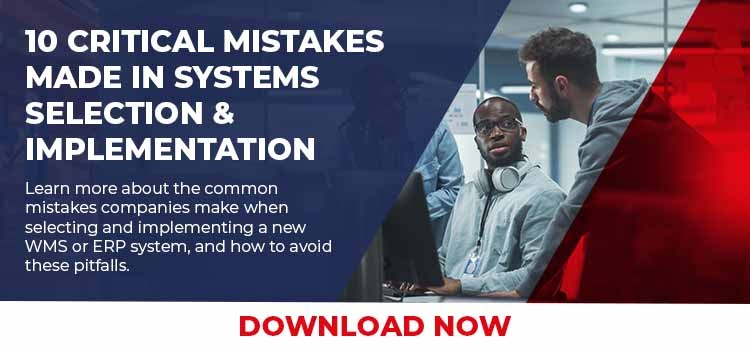 At a recent conference, I had one of the best panels I have ever had on systems strategies. Joining me were: Ashley Kohnen, Co-owner, COO, LEM Products, Keith Kirssin, President of BoxInBoxOut and Shao Li, Senior Operations Manager, UncommonGoods. What made the panel so effective was they easily articulated why the three radically different approaches worked best for providing order management and warehouse management functionality to their company.
At a recent conference, I had one of the best panels I have ever had on systems strategies. Joining me were: Ashley Kohnen, Co-owner, COO, LEM Products, Keith Kirssin, President of BoxInBoxOut and Shao Li, Senior Operations Manager, UncommonGoods. What made the panel so effective was they easily articulated why the three radically different approaches worked best for providing order management and warehouse management functionality to their company.
At LEM, Ashley explained that they had their prior OMS 10 years and they had outgrown its capabilities. LEM is a multichannel e-commerce and wholesale business of “top quality meat processing supplies for the Do-It-Yourself hunter”. She felt that as a small to moderate sized company (my phrasing) they did not want to develop their own systems. They would select the best software vendor; depend on them to continue development of the application and provide on-going support. They recognized they needed consulting assistance to help with the vendor short list and weigh in on the selection process.
Ashley took on the role of Project Manager during the 7 month implementation. She spent anywhere from a couple days a week to almost full time on managing the conversion with the vendor; file conversion discussions; making internal process changes, getting ready for the Go Live, etc. Please let me add, Ashely made the right decision . It isn’t the job of the vendor because they don’t have responsibility for your people, the process changes, training and the ultimately way the system is implemented. You do.
For Keith at BoxInBoxOut, a 3rd Party Logistics company on MCM’s Top 100 List, achieving new functionality is very much driven by the needs of their client companies they provide e-commerce and fulfillment services to. BoxInBoxOut has a small IT department responsible for the design, programming and implementation and used a combination of commercial systems and internal programming to gain functionality. Keith pointed out what every company that has an internal IT development team knows – IT is a vital part of their managing change, understanding what will make departments more productive, bringing innovation that keeps their customers competitive.
On behalf of UncommonGoods, “makers and purveyors of unique gifts and creative home décor”, Shao had a uniquely uncommon (excuse the pun) approach. UncommonGoods has a 15 member in-house IT staff that not only develops order management and warehouse management systems, but they are truly innovative. If you look at the picture you’ll see Shao holding a company designed and produced handheld scanner (blue color) that they have developed and implemented for their large warehouse operation. The total cost to develop was around $10,000. The manufacturing cost was 10% of commercially available units. The project uses a 3D printer produced scanner frame, commercially available technology and uses a low cost Android smart phone. One of the most innovative things I have ever witnessed!
Both Keith and Shao pointed that if you’re going to develop your own systems, the IT department must team up with the user departments on the design, development and testing. All three panelists agreed that defining written functional requirements is critical. Key people in the company also need to stay current with what industry best practices are in the application areas being developed.
I presented that 50% of the large projects like we discussed are not delivered on time or within budget. Reasons include lack of project management; faulty expectations and budgets from the beginning; inability to fully comprehend new system functionality early; file conversion and testing taking longer than expected, etc.
In my experience, management needs to know early on the following points which are often difficult to accurately determine before committing to the project selection and implementation:
- Will a commercial system fit my business and what are the potential gaps requiring modifications or process changes?
- Are you willing to change your internal processes rather than modify?
- Accurate estimate of the total cost of ownership for acquisition and annual support;
- Timeline for major tasks to get from today through Go Live;
- Who will manage the project?
The majority of the initial acquisition cost is in professional services by the software vendor including education and training; modifications; working with your staff on the project and status weekly; file conversion specifications and testing; Go Live responsibilities, etc. Professional services can be 1.5 to 2 times the license costs. The other unknown in larger projects is accurate equipment configuration including data repositories and report servers; system instances for development and testing; user training and production; failover data storage and archiving data; etc.
Thank you to our excellent panelists sharing their practical experience and what worked for their companies in successfully acquiring and implementing systems.





SHARE